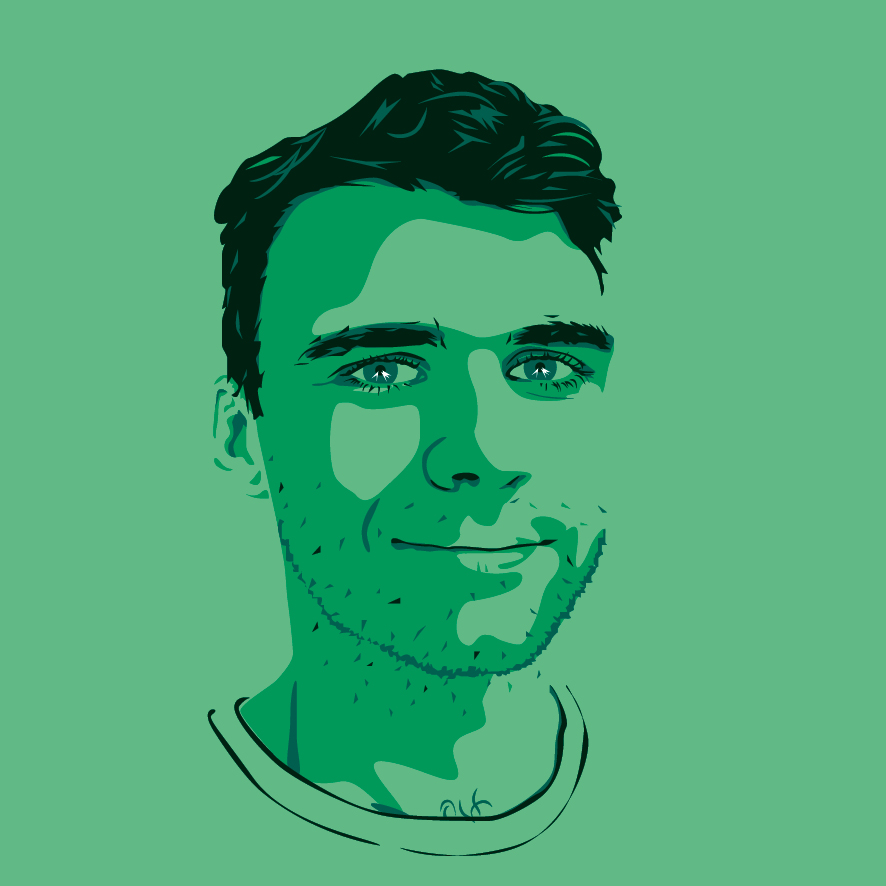The secret to The Signal From Tölva’s punchy combat
The 2017 game of manipulating robot factions isn't famous for its gunfeel, but maybe it should be.
The valley below me is alive with orange, pink, and green lasers. Two enemy robot factions, bandits and zealots, are battling it out, and neither has seen me yet. One bandit hangs back and fires a sniper rifle, its tracer streaking across the scene with an electronic screech that echoes off the hillsides. The beam smashes into the first zealot with a sound of crunching metal, and the robot crumbles. The second bandit moves forward, powering up a beam weapon, a wide red jet that distorts the air around it and crackles with energy. In response, the nearest zealot beeps into action, sounding a siren before booting up a shield with a hiss, a matrix of light extending from the front of his armor.
But that shield doesn’t last long. When it powers down with an unmistakable whoosh I pounce, alongside my two AI companions. I aim down my sight, pull the trigger, and the zealot drops, his head flying off and hitting a nearby rock with a dull thud as his now useless shell clanks limply to the ground. The bandits flee.
The Signal From Tölva’s pace is slow, but its gunplay is anything but. Chris called it "fizzing" in his review and he was spot on: its bright lights and sci-fi sound effects make its weapons come alive, and after each battle you want to head immediately to the next waypoint in search of another set of enemies to blast apart.
How did small indie studio Big Robot make combat so satisfying? I spoke to founder Jim Rossignol to find out.
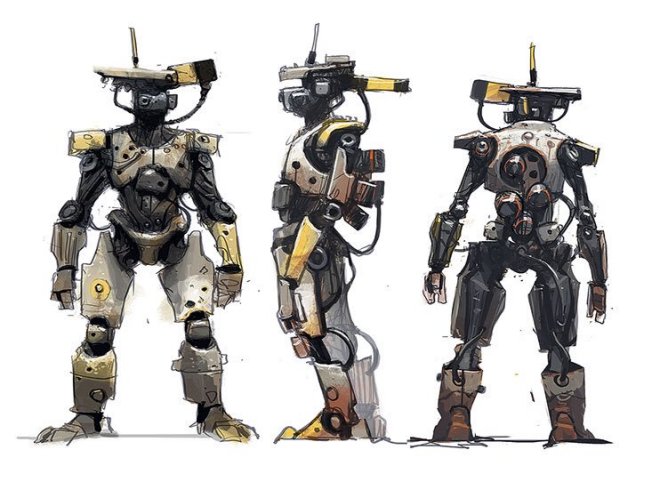
Heavy gear
Until Ian McQue, formerly of Rockstar, drew the designs for the game’s robots, the team saw Tölva as a "Quake-style shooter, complete with bunny hopping and rail guns," Rossignol says. But then they fell in love with the "earthy, grounded" aesthetic of McQue’s art and decided the weapons would have to feel heavier to match. That comes across in the final game: a lot of what makes Tölva’s shooting feel great is that when you pull the trigger, the result is big and powerful.
The first thing you do in Tölva is fire a weapon, and if it’s got a crazy science fiction sound and a pulse-y effect then you know where you are with it.
Jim Rossignol
Some games create that feeling with recoil—but given Tölva’s robots shouldn’t have any trouble keeping a gun steady, that sense of weight relies instead on both visual and sound effects. In its simplest form, that means lots of bright lights, whether that’s shining bullet tracers or laser beams. "We wanted to have big colorful lasers," Rossignol says. "[We wanted] big long trails that last quite a long time and light up the landscape. The beam weapons have an enormous fan of light sweeping across the landscape."
And a lot of the design was informed by a vision of a single scene similar to the one I described at the beginning of this article. "We like that thing where you come over a crest of a hill and you see AI duking it out. You see tracer fire between different units, and that was one of the main goals, and one of the things that I think works best in Tölva. When you see groups engaging each other in the distance you get that flicker of gunfire that allows you to see where people are firing from. That brings those battles to life."
The biggest gaming news, reviews and hardware deals
Keep up to date with the most important stories and the best deals, as picked by the PC Gamer team.
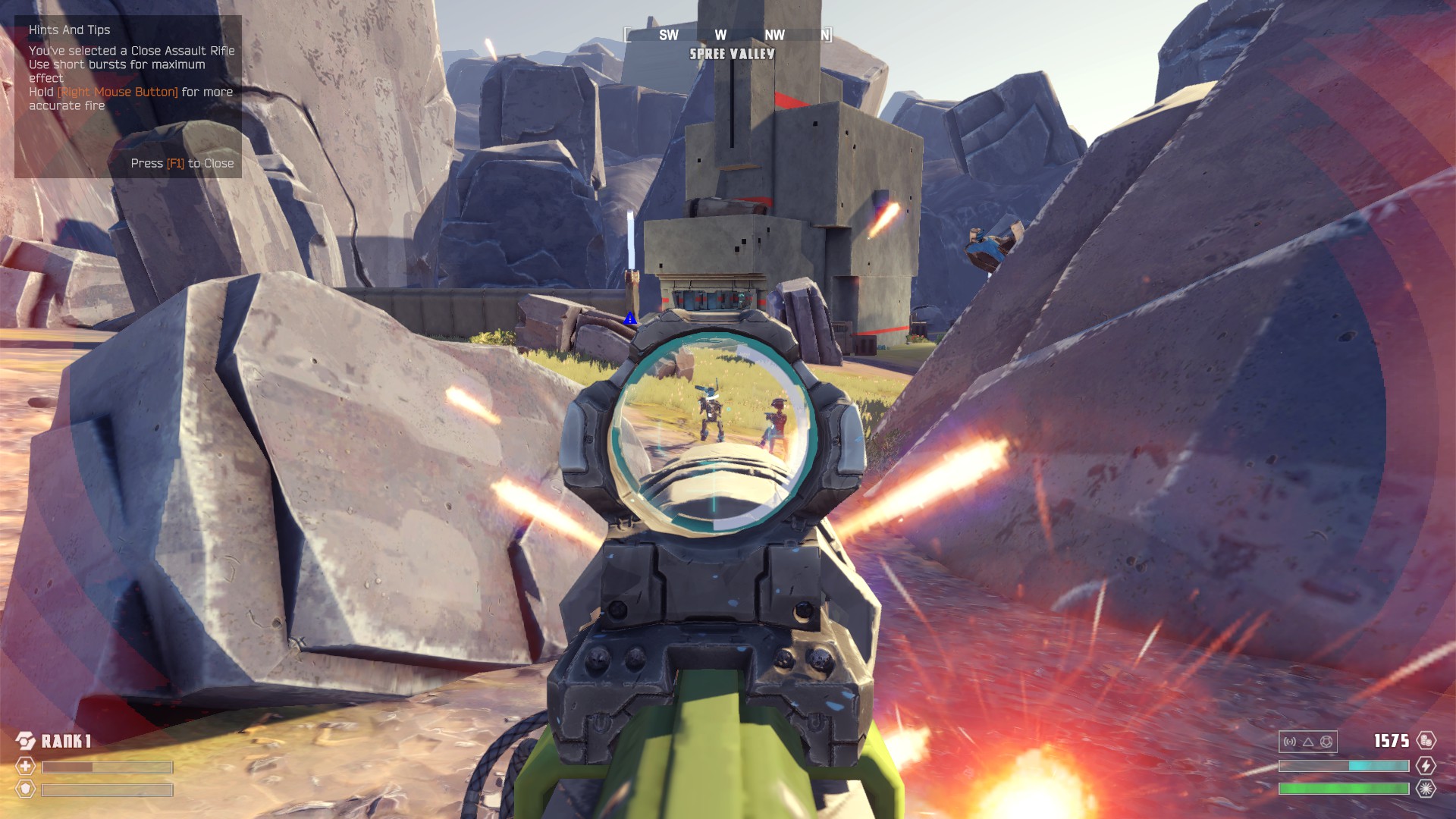
The beam weapon, which fires out a continuous stream of energy, was specifically designed to fit this fantasy. "[It’s] a big continuous concussive beam raking across the landscape, there can’t be anything more science fiction than that, right?" Interestingly, he tells me the look of the gun comes from combining a jet engine and a leaf blower that McQue was using to clear his garden when inspiration struck. Unconventional, but you can see it if you look closely enough.
There were more subtle features to make the gunfire look great, too. Every effect in the game, whether that’s a bullet tracer or an explosion, has an "air lensing distortion", which essentially warps the world around it. "The first thing you do in Tölva is fire a weapon, and if it’s got a crazy science fiction sound and a pulse-y effect then you know where you are with it."
The guns really shine at night, when bullet tracers act as beacons for distant action. Rossignol says that during development he considered abandoning the game’s day-night cycle and just setting the game beneath the stars because of how good it looked. Plus, having the day-night cycle was a pain, he says, because it required the team to use real-time shadow casting, which is costly to develop and puts strain on players’ PCs. But in the end, the team kept the cycle. "I felt the contrast between those beautiful clear blue-sky days and the starry nights where all the weapons were flickering… it was just too much to lose."
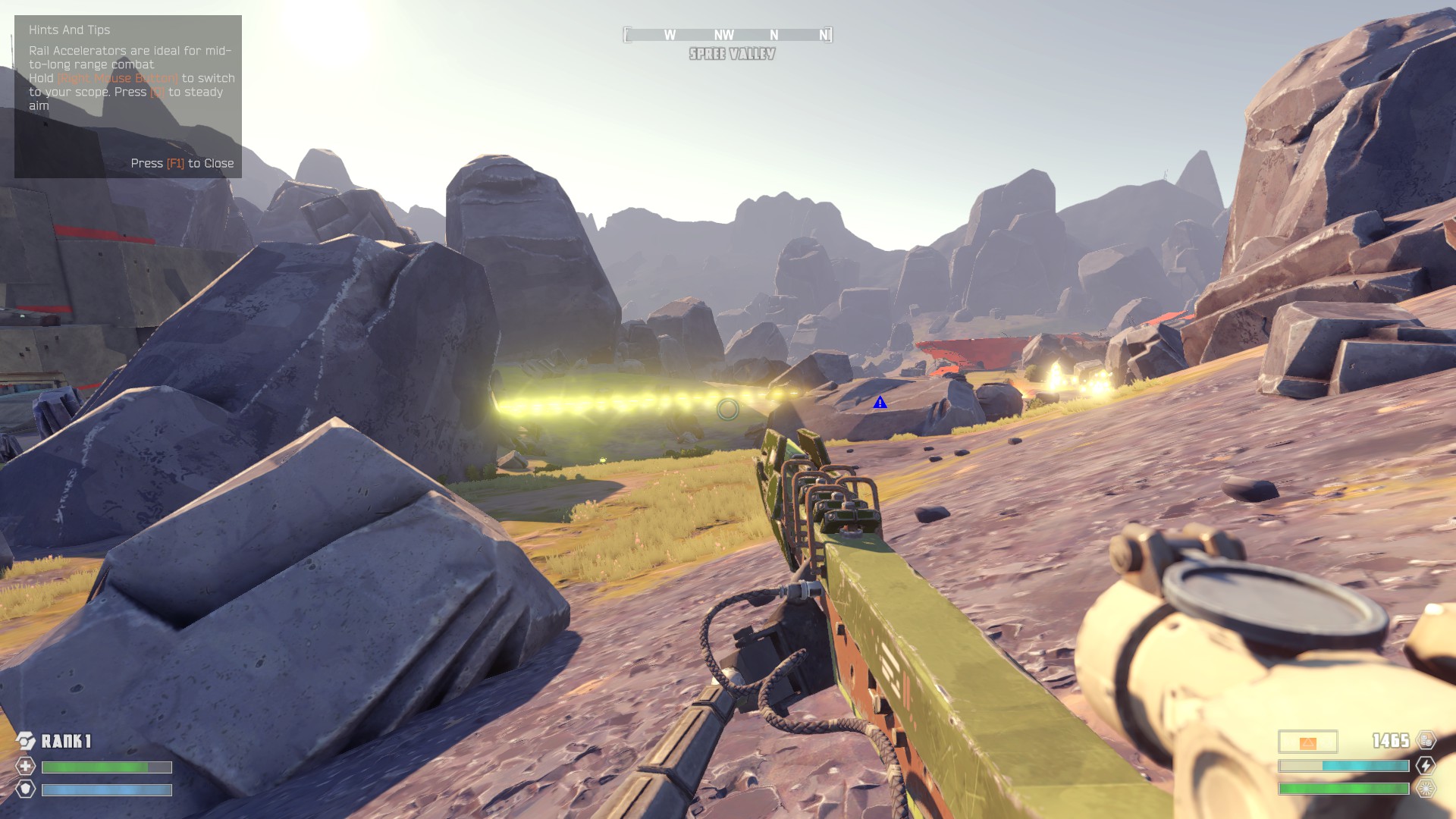
Sound and vision
The one thing that always struck me about the game’s audio was the way that assault rifle bullets sound when they hit robots. It’s a real plink-plink of metal on metal that just sounds right. The sound effects match the aesthetic McQue created, it’s a wonderful mix of futuristic noises and the kind of beeps you’d expect from chunky, battered machines. Rossignol says a lot of the sounds are modulated versions of "the bleeps and whirrs that old-fashioned computers make when they’re switched on, or the kind of noises hard drives used to make." Those sounds help sell the combat, make it believable despite the other-worldly setting.
As you take your finger off the trigger you hear the end of your shot cut off, that just sells the behavior of the weapon more, and gives them way more life than they had.
Jim Rossignol
The gun sounds are inspired by a single idea that Rossignol picked up at a talk by Introversion Software at an event years ago. "They were saying that even on the very simplest level, if you’re firing and the gunshot audio somehow matched with the video then it sold it better and made it more believable, and that’s always stuck with me." That was made possible when Michael Manning, now at Sumo Digital, came on board with Tölva. He took the team’s existing work to the next level.
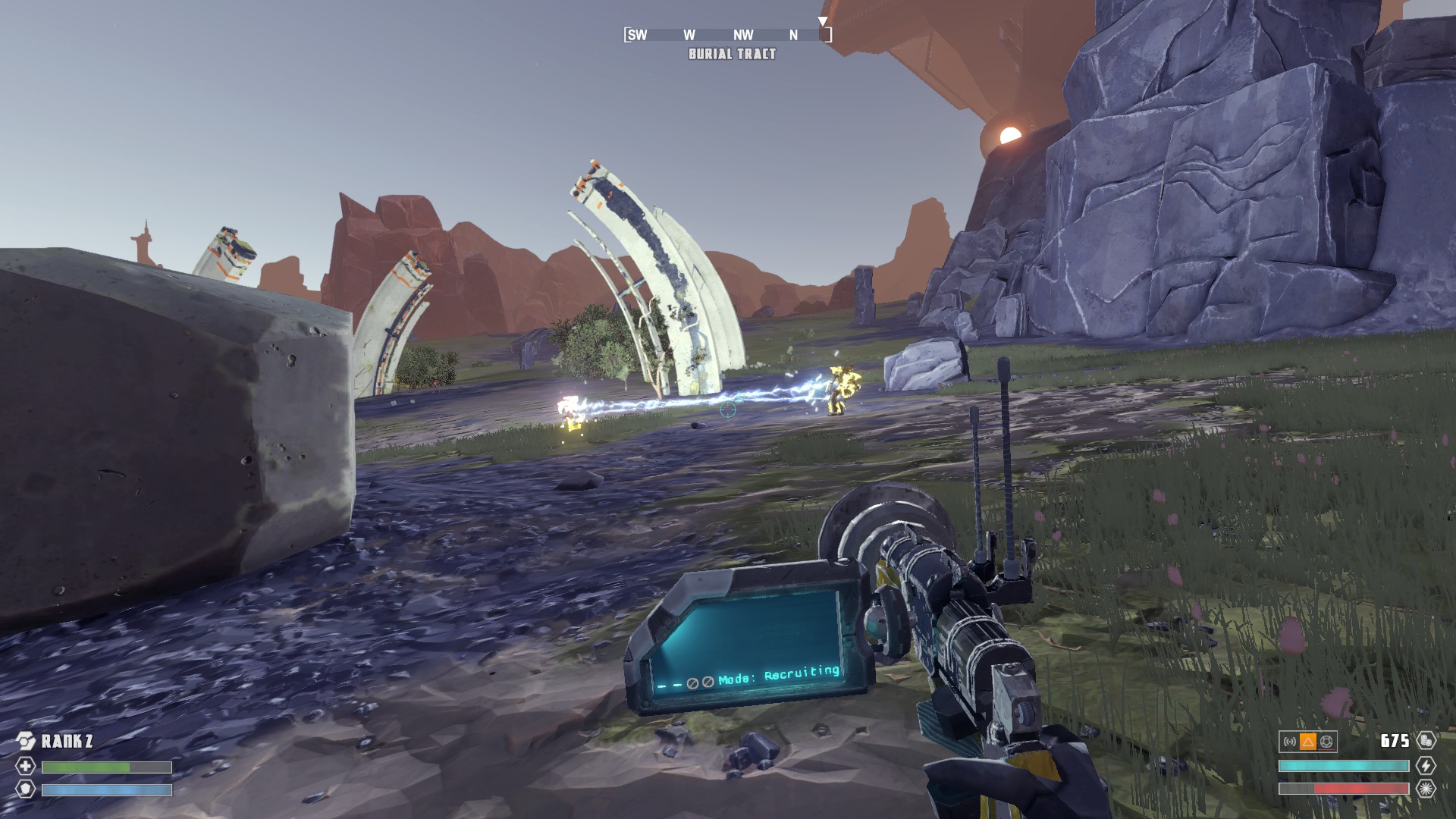
"The extent of our tech was we had a version of your gunshot close up, and another version that echoed in the distance, but Mick was able to show us how to build the audio components to add near, mid-range and far versions of any particular weapon shots. And then you’ve got that stretching effect of the different frequencies being taken out as it moves away from you.
"Also, rather than having a single sound effect for when the weapons go off, we broke it down to an overall firing noise and a projectile leaving noise, so every weapon has components that make the sound better. As you take your finger off the trigger you hear the end of your shot cut off, that just sells the behavior of the weapon more, and gives them way more life than they had." The game also features a lot of echo, a simple trick that I’ve always thought adds to its atmosphere. It’s something Rossignol wishes he’d included in his previous game, Sir, You Are Being Hunted, and this was a chance to make amends.
It’s the way that these audio and visual effects fuse together that makes Tölva’s shooting standout. For example, Rossignol says the enemies’ shooting was made deliberately inaccurate because he wanted gunshots to fly past the player and thump into the environment around them, creating a sense of panic. "You want the bullets to be landing around you. One of my favorites is the noise of the rail gun hitting the terrain, and they usually miss."
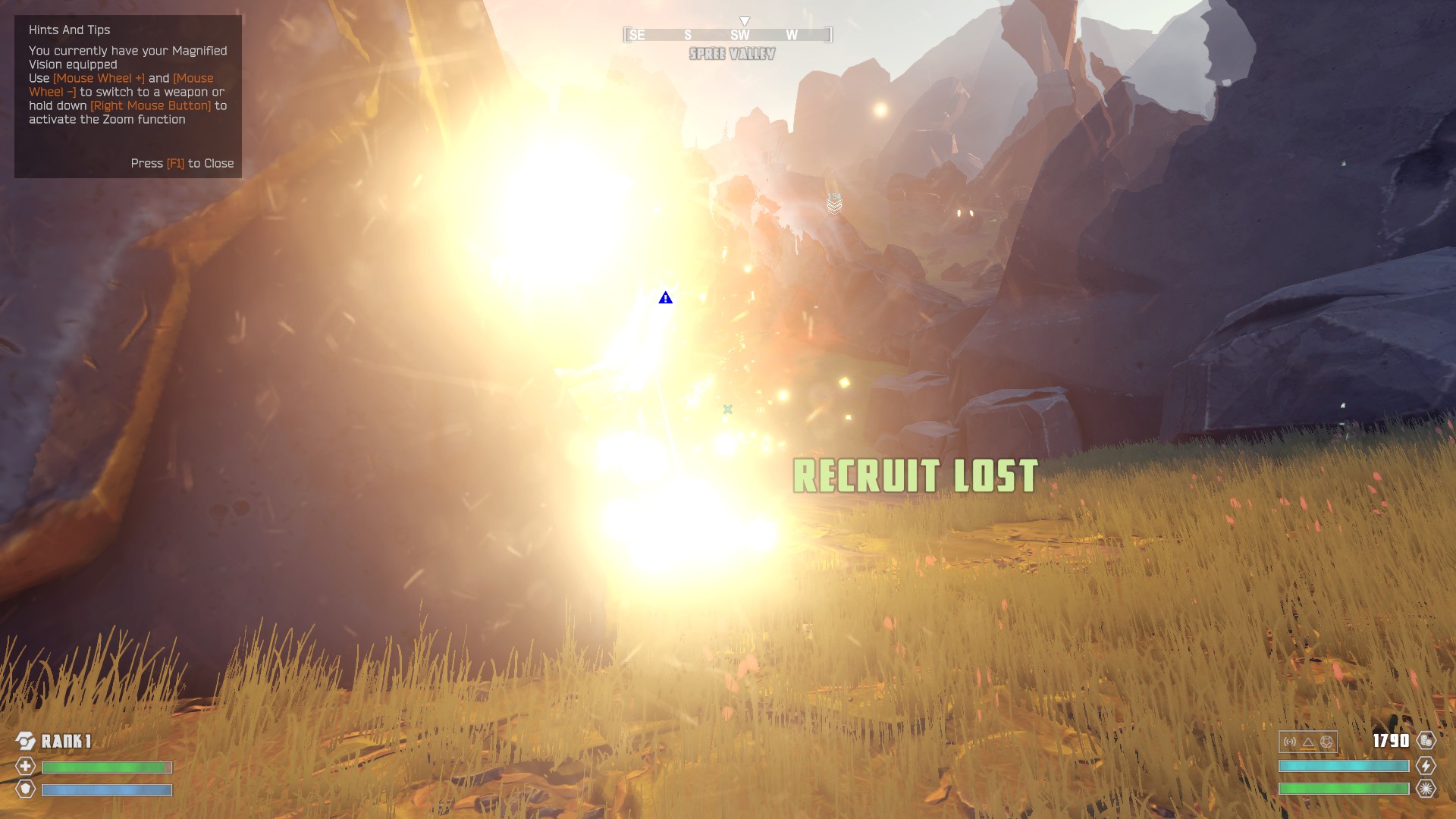
Necessary sacrifices
Of course, as a small studio, Big Robot had to make sacrifices, but most of them are hidden well. Take the guns, for instance. Rossignol explains that while the guns might look and feel very different, they’re actually just one gun model with some variables tweaked and visual modules added, which helped cut development time. The robot shields are another example: the team initially set out to create shields that distorted the environment, an idea inspired by David Lynch’s Dune film. But it was "too intensive", and the solution was a simple overlay to every robot that simply switches from transparent to translucent when the robot turns a shield on.
The lack of robot variety, too, was a result of development constraints. Rossignol wanted to have robots of different sizes, but had to settle for working with a single skeleton and piecing on different bits of armor to give units their own distinct feel. "That’s a bit of a shame, but if we do multiple skeletons we start running into serious issues," he says.
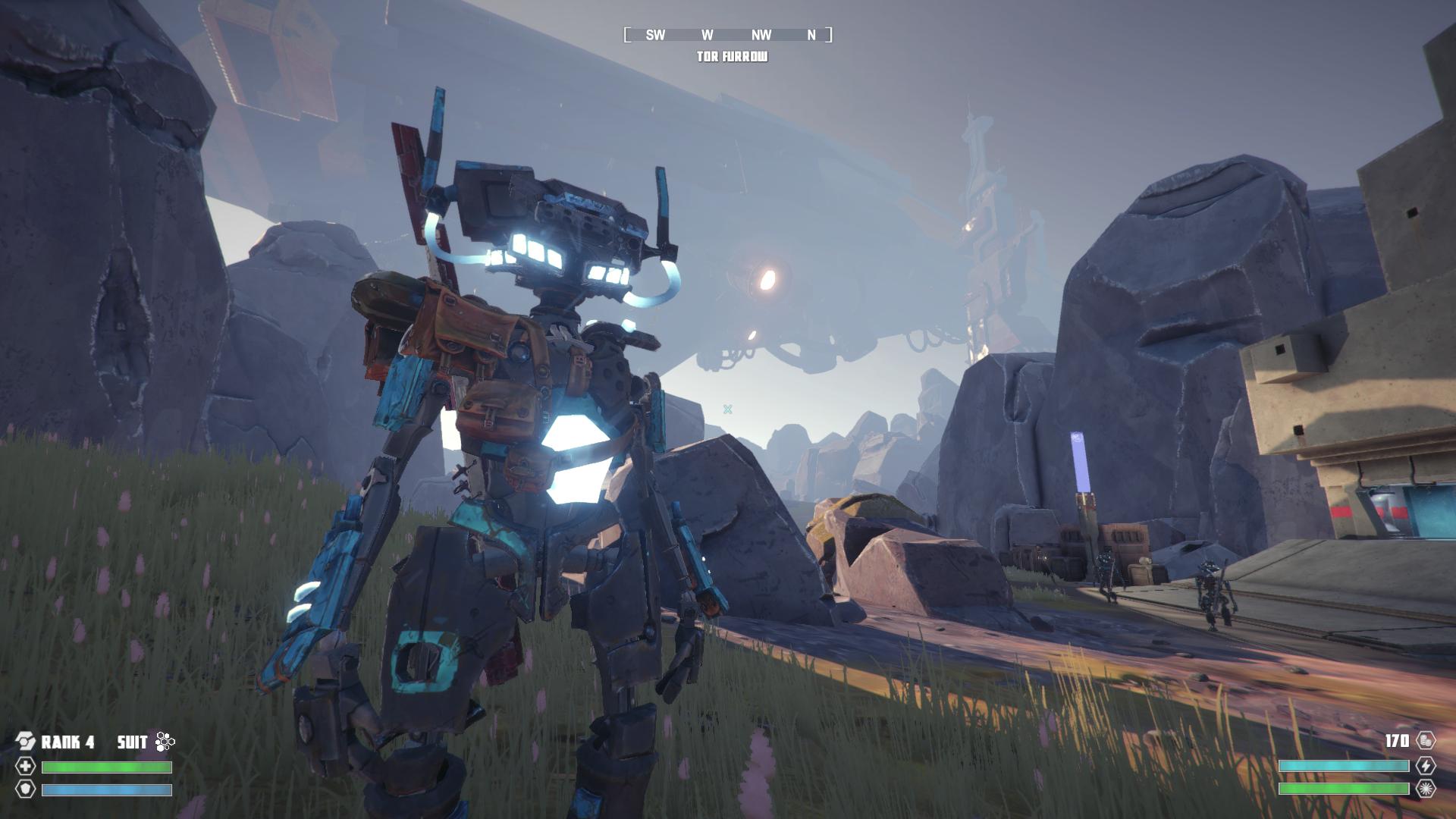
Perhaps it’s something that Big Robot will put in its next game. Rossignol is currently working on an icy expansion for Tölva but is keen to push the boundaries on his next project, particularly with environment physics, which he says is the main thing he’ll look to improve upon. "[I want] more objects to blow up, more things that could be knocked around by explosions or bullets. I love it in games when you get chain reactions, you blow up a barrel and it knocks somebody out and knocks another guy over and all that good stuff.
"The size of Tölva’s world meant we couldn’t have more props. If we did a smaller environment next time, I’d love to have that pinging stuff around, I think it adds to the sense of dynamism in game combat. I’d love to do more of that kind of stuff when we move on." Big Robot has shown that it has the talent to create a great shooter in a huge, semi-open world. Reducing the world size in its next game would mean it could pay more attention to visual effects, boost enemy variety and litter the combat arena with debris. And for people like me who enjoyed Tölva’s sci-fi shooting and would love to see it repeated, that sounds like a fantasy that’s worth waiting for.
Disclosure: Jim Rossignol worked for PC Gamer up until 2010, although the author had no contact with him during that time.
Samuel Horti is a long-time freelance writer for PC Gamer based in the UK, who loves RPGs and making long lists of games he'll never have time to play.
